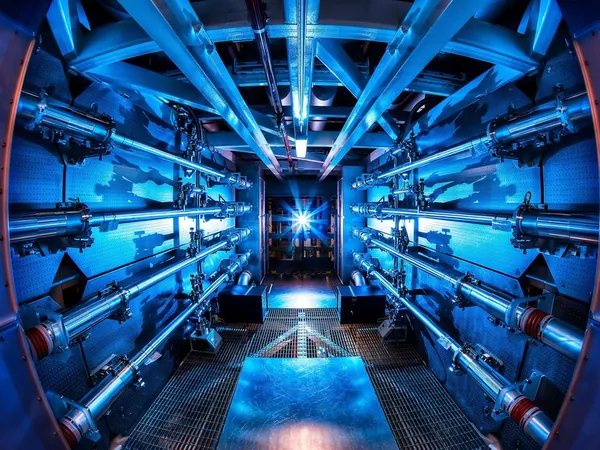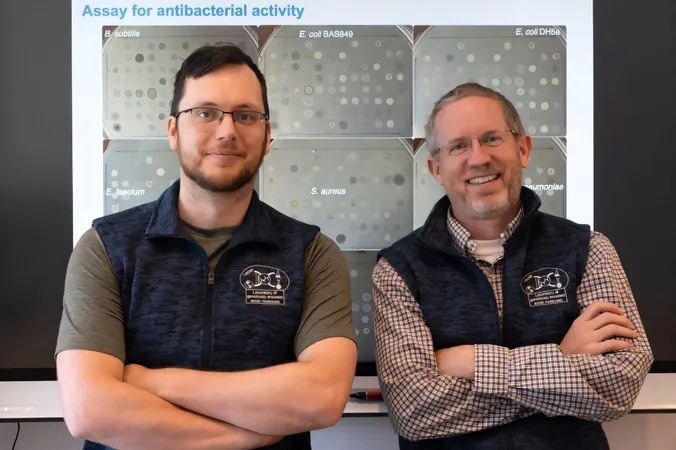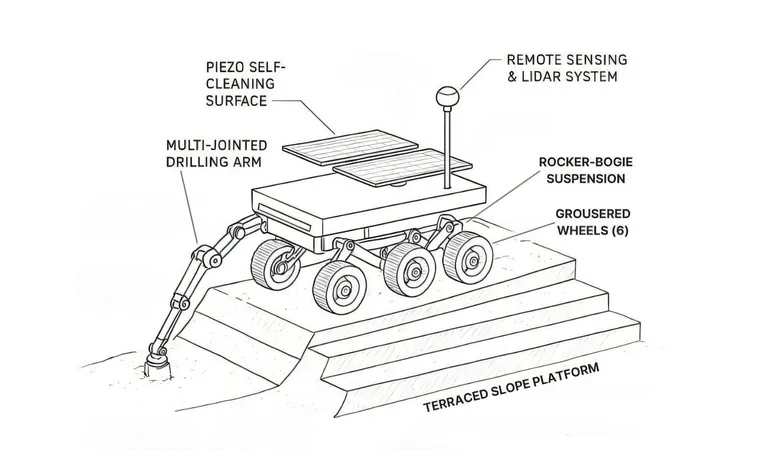
Revolutionary Computational Method Unlocks Secrets of Exotic Matter States
2025-06-30
Author: Sophie
Unveiling Warm Dense Matter: A Scientific Breakthrough
Warm dense matter (WDM) exists at extreme temperatures, ranging from thousands to hundreds of millions of Kelvin, and can reach densities beyond that of solids. Dr. Tobias Dornheim, a junior group leader at CASUS, highlights its importance: "These conditions are found in gas giants, brown dwarfs, and white dwarf atmospheres, and can also be simulated on Earth through events like meteorite impacts or high-powered laser experiments."
WDM's Significance in Materials and Fusion Research
WDM is pivotal in materials research—the phenomenon enables the creation of tiny diamonds from compressed plastics. It's also central to the field of fusion energy, particularly in laser-driven inertial confinement fusion, where hydrogen isotopes are heated and compressed to fuse, releasing significant energy. Dr. Tilo Döppner from the Lawrence Livermore National Laboratory (LLNL) explains, "During fusion experiments, understanding the WDM state is crucial for enhancing energy output."
The Computational Challenge: Overcoming the Sign Problem
However, simulating WDM is no easy feat. Conventional methods struggle since WDM is not definitively solid, liquid, or plasma. Dr. Maximilian Böhme, a Lawrence Fellow, points out, "Standard simulation techniques often involve approximations that limit their accuracy."
Innovative Approach: Imaginary Particle Statistics
Dornheim and his team made a breakthrough by utilizing imaginary particle statistics to tackle the notorious 'sign problem' inherent in Path Integral Monte Carlo simulations (PIMC). This approach allows for a precise quantum mechanical description of WDM materials, specifically beryllium for their experiments.
Groundbreaking Experimental Validation at LLNL
The research involved compressing beryllium capsules under extreme conditions using 192 laser beams at the NIF, while powerful X-rays helped analyze the resulting material behavior. Traditionally used models fell short in accuracy, but Dornheim’s new method has revolutionized parameter determination like density and temperature.
Implications for Future Fusion Research
The findings have critical implications for future hydrogen fusion modeling. Dr. Jan Vorberger emphasizes, "Our precise method offers a more accurate diagnosis, potentially correcting previous modeling inaccuracies. This is essential for the future design of fusion power systems and understanding various cosmic phenomena."
What’s Next for the Research Team?
Come autumn 2025, the team plans to conduct further experiments at the NIF. Dornheim aims to refine their diagnostic techniques to gauge sensitivity to minor changes. By aligning calculations with new experimental designs, they hope to optimize the efficiency of fusion capsules.
Collaborative Efforts in Scientific Advancements
This monumental study involved contributions from multiple international institutions, including the Royal Institute of Technology (KTH) in Sweden, the University of Rostock, the Technical University of Dresden, the University of Warwick in the UK, and the SLAC National Accelerator Laboratory in the USA.









 Brasil (PT)
Brasil (PT)
 Canada (EN)
Canada (EN)
 Chile (ES)
Chile (ES)
 Česko (CS)
Česko (CS)
 대한민국 (KO)
대한민국 (KO)
 España (ES)
España (ES)
 France (FR)
France (FR)
 Hong Kong (EN)
Hong Kong (EN)
 Italia (IT)
Italia (IT)
 日本 (JA)
日本 (JA)
 Magyarország (HU)
Magyarország (HU)
 Norge (NO)
Norge (NO)
 Polska (PL)
Polska (PL)
 Schweiz (DE)
Schweiz (DE)
 Singapore (EN)
Singapore (EN)
 Sverige (SV)
Sverige (SV)
 Suomi (FI)
Suomi (FI)
 Türkiye (TR)
Türkiye (TR)
 الإمارات العربية المتحدة (AR)
الإمارات العربية المتحدة (AR)